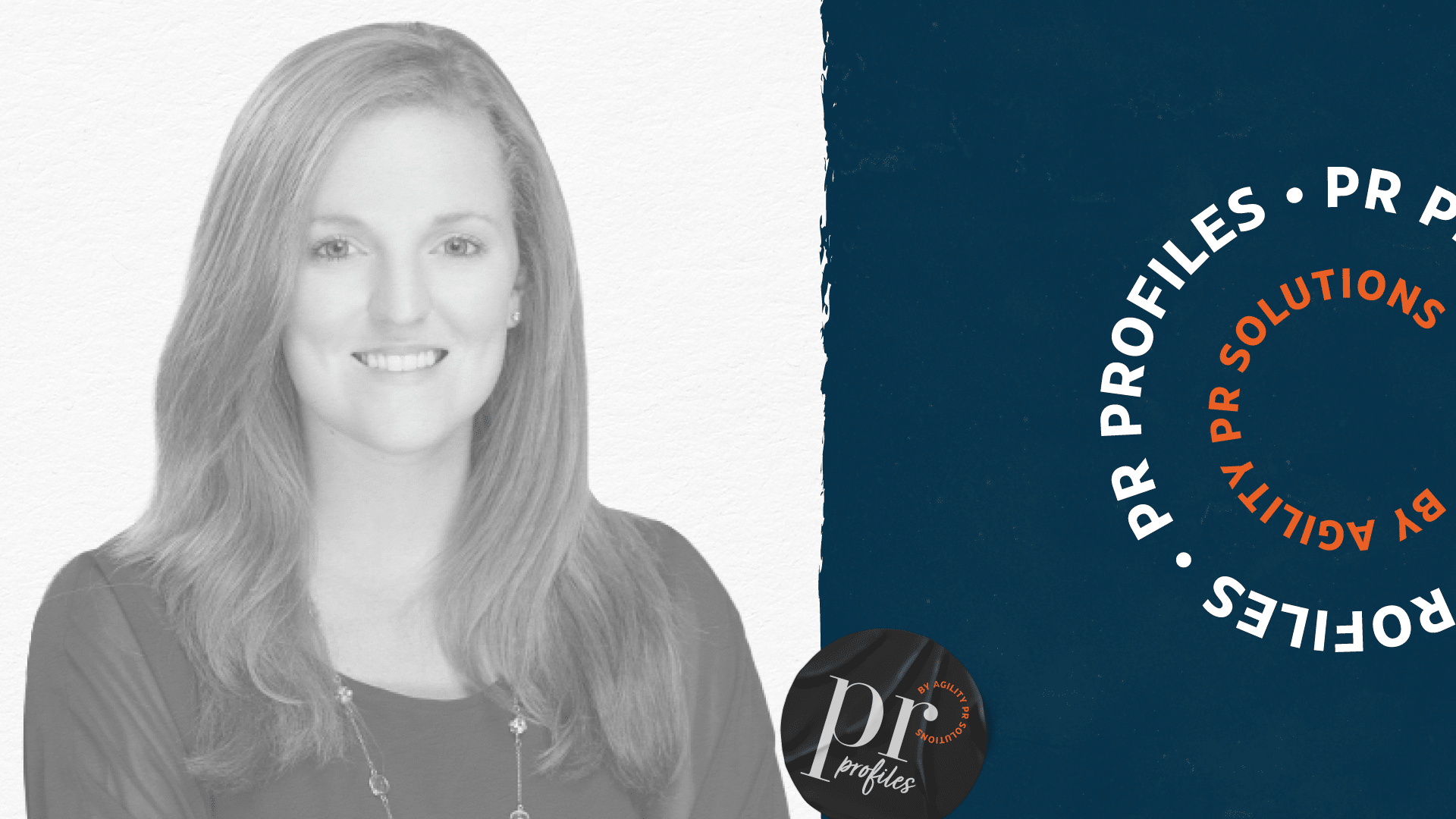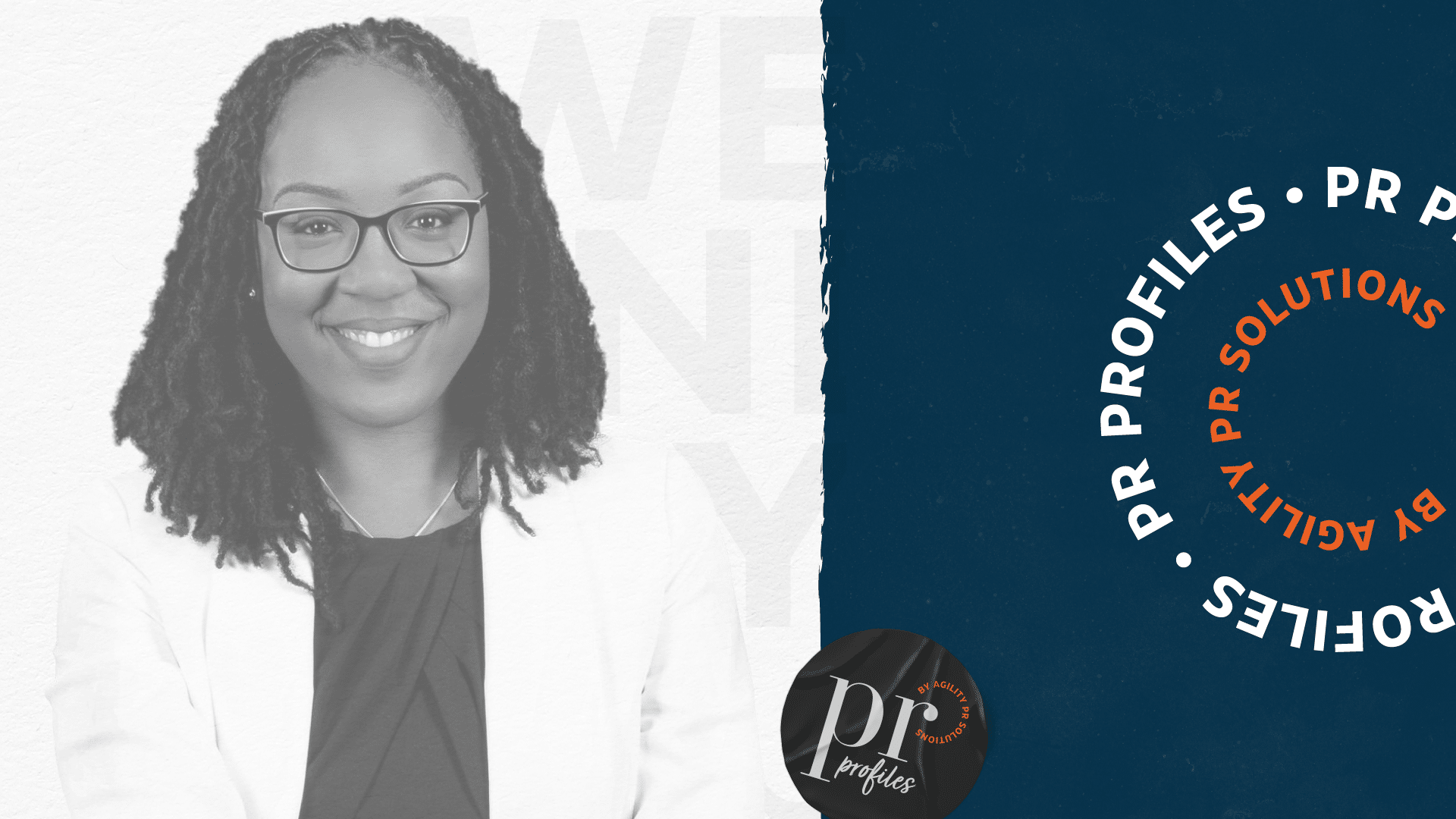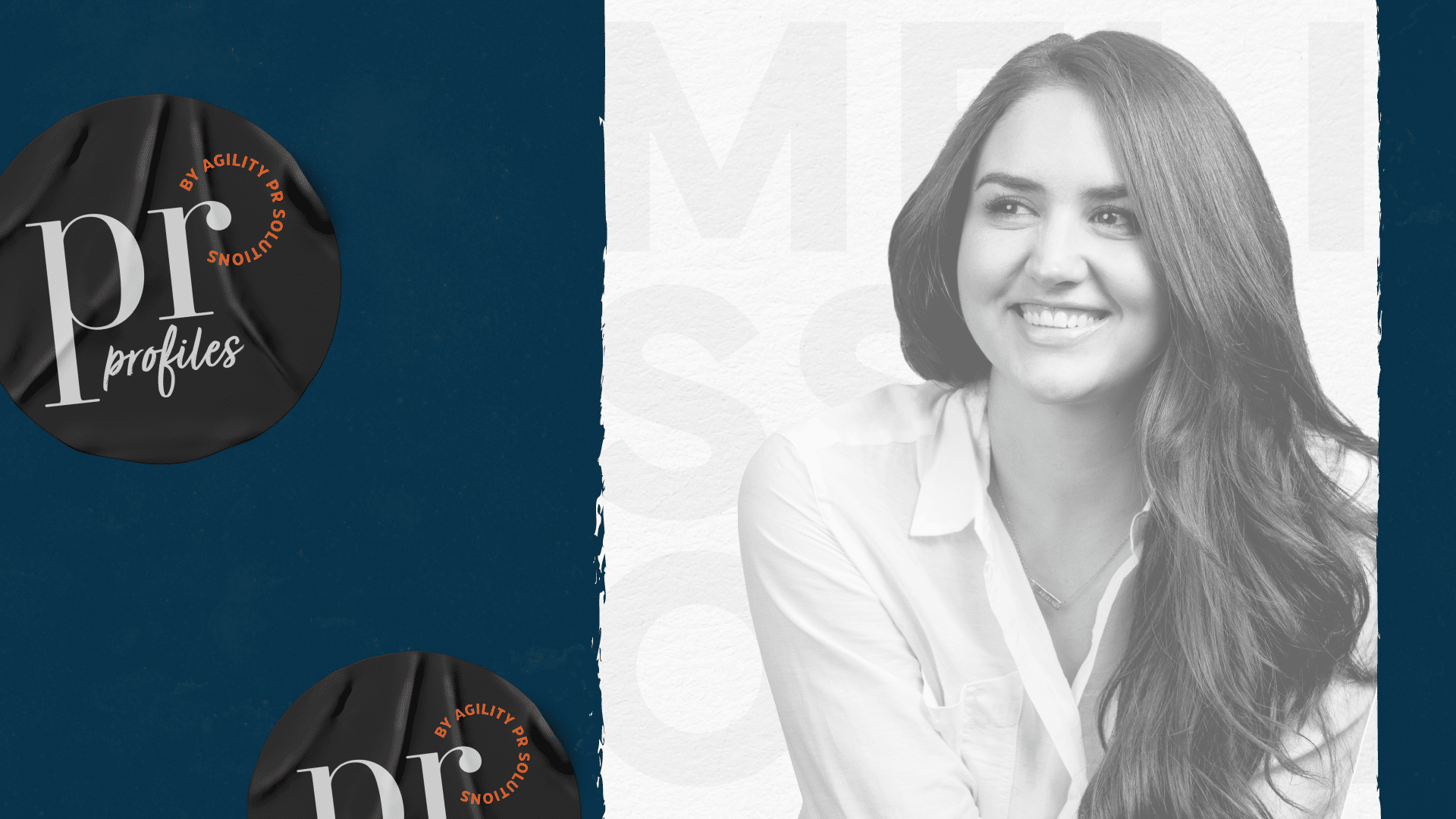Whether you’re an agency, not-for-profit, or international corporation, media monitoring will benefit you and your communications. While there are free tools you can cobble together to do some basic monitoring, this is an area we recommend putting some budget behind.
Self-serve media monitoring
What do we mean by this? Self-serve media monitoring solutions are usually subscription based, cloud hosted monitoring services that allow you to log in and view your monitoring online. With this kind of solution, you can be confident you’re not missing any mentions.
They will search a broad range of media, including radio, TV, print, podcast, social media, and online, for mentions and images associated with your brand. You’ll get the most benefit from this type of solution if you set your monitoring to search for keywords beyond those associated with your brand, such as industry and competitor keywords.
Your vendor should hopefully give in-depth training on the platform so that you can get started with your media monitoring right away. The platform should also be intuitive and easy to use so you’re not spending valuable time trying to figure things out.
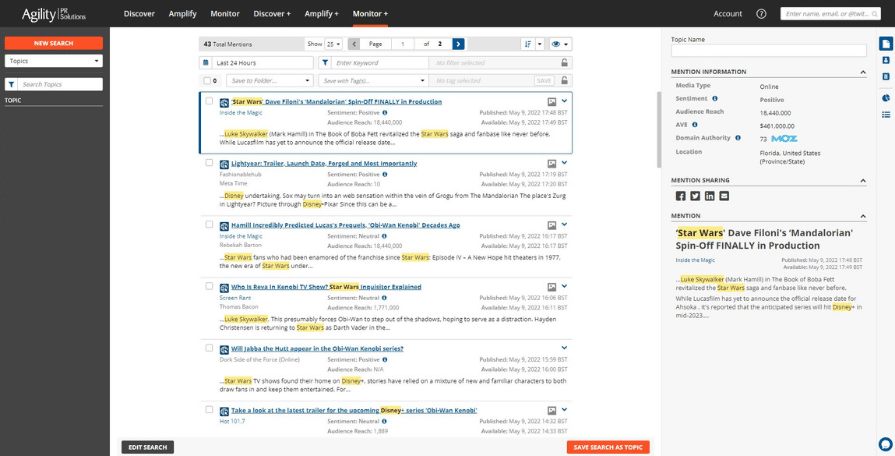
Example Star Wars media monitoring search on Agility Monitoring+
Media intelligence services (curated, premium monitoring)
Self-serve media monitoring is great if you have the time and bandwidth to manage your media monitoring yourself and your needs are less complex. However, if you need more, media intelligence services may be the way to go.
There are three major reasons why you may want to upgrade to curated monitoring:
- Your monitoring needs are more complex. For example, you may have multiple and diverse product offerings, or you have individual communications teams in different geographic locations, (which reminds us of one of our clients).
- You’re looking for more analysis and measurement than even the best media monitoring cloud software can provide.
- You don’t have the time or people power to manage your media monitoring successfully and efficiently.
With media intelligence services, you’ll have a dedicated media analyst looking out for your brand by:
- Setting up and fine tuning all keyword searches
- Curating executive ready daily briefs
- Adding context and sentiment analysis to your results
It’s all the power of the machines but with the human touch.
How do self-serve and curated media monitoring differ?
Aside from what we’ve already laid out, self-serve and curated media monitoring differ in three main ways: sentiment analysis, deliverables, and relevancy.
Sentiment analysis
Self-serve monitoring provides a powerful automated sentiment analysis technology that indicates the overall tone of an article but may not catch the subtler context.
Curated monitoring is the winning combo of powerful technology and human intuition for accurate sentiment every time. Nothing beats your media analyst when it comes to understanding the intricacies and nuances of language.
Deliverables
With self-serve, you’ll be able to demonstrate the impact of your PR with manually curated or automatic media briefings and executive reports built using real-time data.
With curated monitoring, your daily briefs will be hand-prepared by your media analyst on the topics and coverage you care about. You’ll be able to see what is important to you and your business every day without going further than your inbox. If you need more, your analyst will deliver a presentation-ready media insights report dissecting your coverage and highlighting the custom metrics you want.
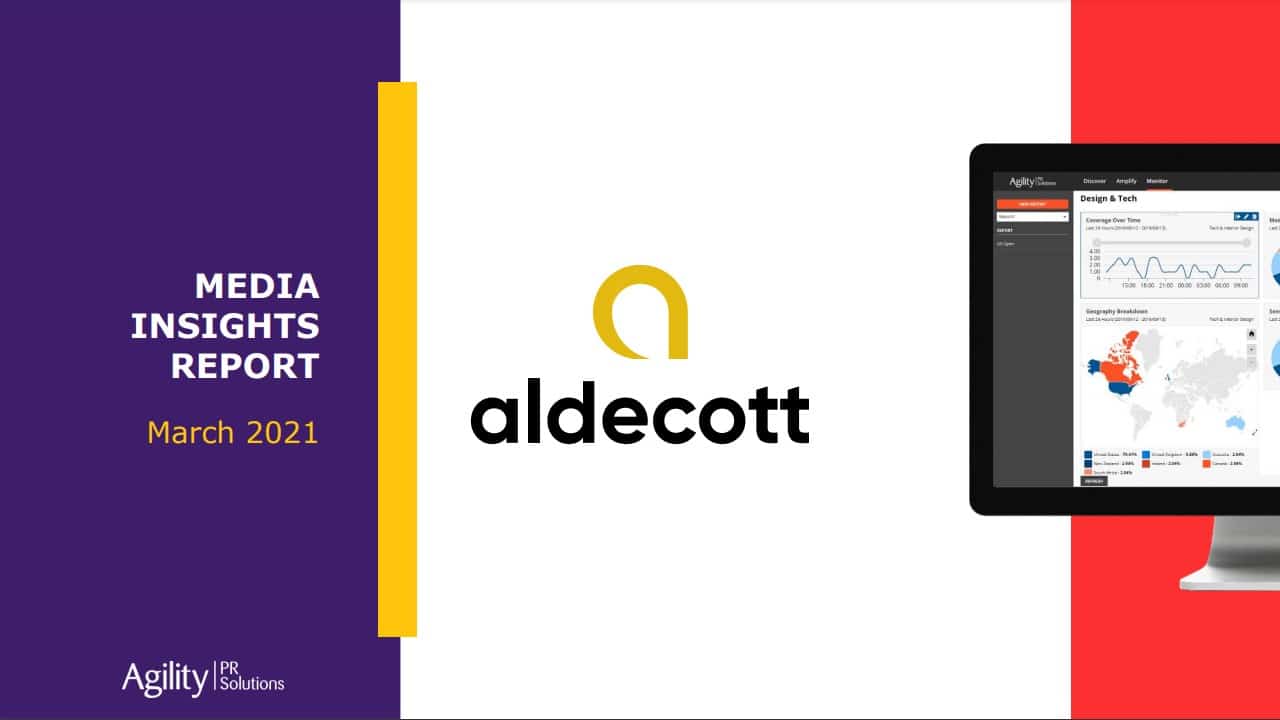
Example Media Insights Report
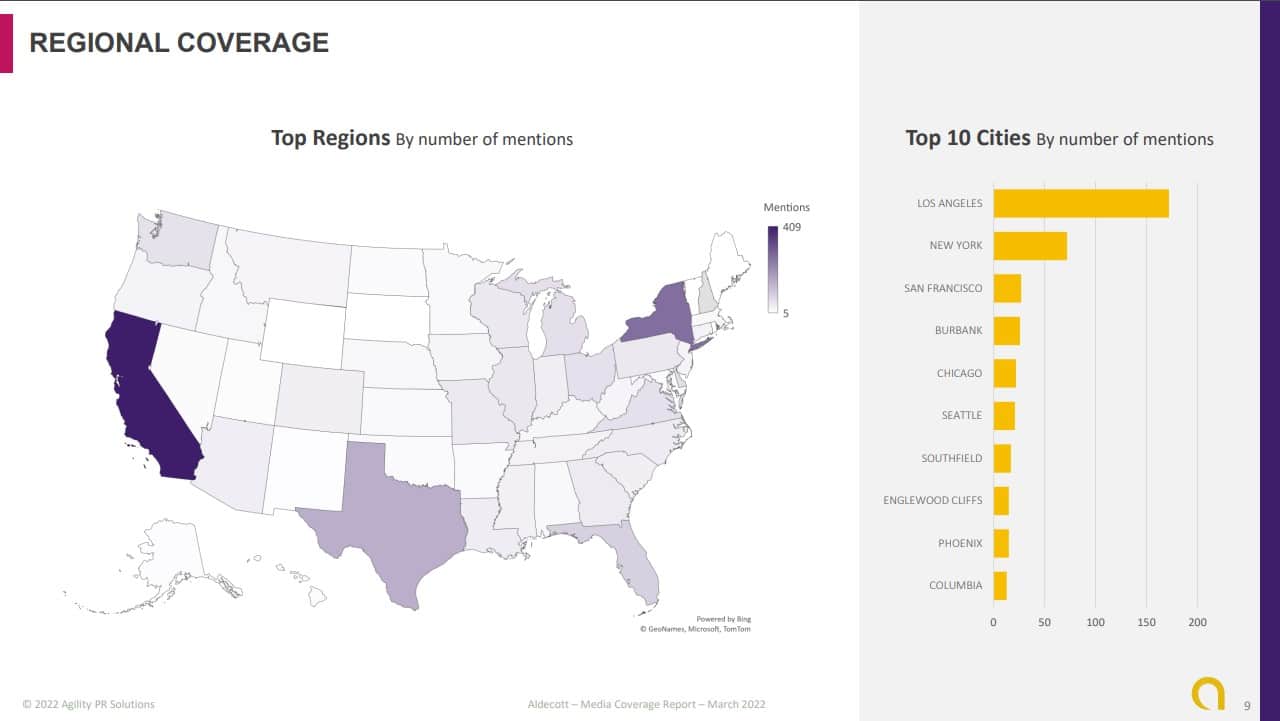
Example Media Insights Report – regional coverage
Relevancy
Self-serve allows you to monitor and see your coverage any time, just by logging in. With automatic, real-time alerts, you’ll know as soon as a story that matters to you is published.
With curated monitoring, every piece of content is vetted and curated, which means only relevant coverage makes it through. Think of it as your media analyst separating the wheat from the chafe.
Decision time
If you’re still not sure what type of monitoring you’re looking for, take advantage of any free demos media monitoring vendors offer. This will give you a chance to tour the platform and ask specific questions of the sales associate.


